White Balance
Friday, January 9th, 2009
I did some White Balance (WB) testing with my Canon 40D to confirm and answer a question I had;
Does it matter what WB I shoot in with RAW ?
Below I provide some information on WB and step through my test results.
Information About White Balance
As we all know, photography is about light. Correct white balancing is about getting the white light right.
Our eyes are good at judging what is white under different light sources, so a white object looks white no matter what type of light we are in. However, digital cameras have difficulty with Auto White Balance (AWB). We therefore need to tell digital cameras how to interpret the colour of light so it produces the most natural looking colours in a photo. By selecting a certain WB, the software in the camera adjusts the colour temperature to make those white areas look white in the photo.
An incorrect WB can create incorrect color casts, which are unrealistic and unnatural. Understanding digital WB can help you avoid incorrect color casts created by your digital camera’s auto white balancing.
A digital camera’s AWB may obtain the correct white balance, but not all the time. So it’s important to recognise the light you are in and adjust the WB accordingly.
Proper camera WB needs to take into account the color temperature of a light source, which refers to the relative warmth or coolness of white light. Examples of WB are tungsten (lighting from warm incandescent globes), Daylight (light from a sunny day outdoors), etc.
Cameras allow you to select the WB, giving you the freedom to get close to the correct colour temperature of the light you are in. This process will remove the unrealistic color casts so objects which appear white in real life will be white in your photo. Some cameras allow you to manually select the exact colour temperature by photographing a white object and recording that data to use as a custom white balance.
In some situations you may need this WB to be very accurate. For example, fashion and advertising photography where a designer will want the colours accurately recorded. And portrait and wedding photography where accurate skin tones are necessary. In these cases the use of a target and custom white balance may be essential because the WB selections available in camera are only approximations.
The table below is taken from the Canon user manual, showing the approximate colour temperatures for certain lighting.
| White Balance Mode | Colour Temperature (Approx. K (Kelvin)) |
| Auto | 3000-7000 |
| Daylight | 5200 |
| Shade | 7000 |
| Cloudy, Twilight, Sunset | 6000 |
| Tungsten light | 3200 |
| White fluorescent light | 4000 |
| Flash | 6000 |
The chart below shows the path that a black body color will take as the black body temperature changes. Lines crossing the locus indicate lines of constant correlated color temperature. (for a technical explanation, see the source from wikipedia).
In layman’s terms, the chart shows the colour cast of a certain light temperature.
Eg; Tugnsten light (approx 3200K) is a warm light and has a yellow cast, the chart shows it will follow a path having a yellow colour.

Now for Some Test Results
Getting back to the question,
Does it matter what WB I shoot in with RAW ?
The first 3 test photos shown below are taken with the same settings, on a cloudy evening at sunset, but for each photo, a different WB was used. You can see the obvious difference in colour.
Test Photos – Different WB, Displayed “As Shot”
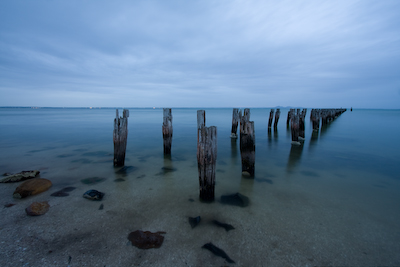 |
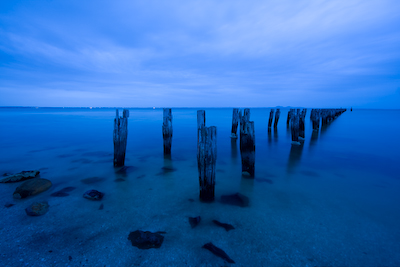 |
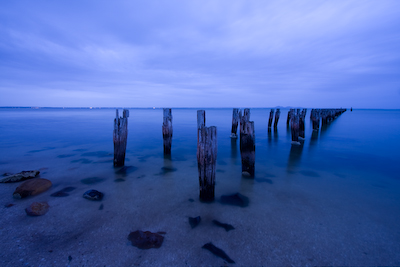 |
| Cloudy | Tungsten | Fluorescent |
I modified the temperature of the RAW images during post processing to check if shooting in a certain WB had any effect. The 2nd set of RAW images below, are the same photos shown above, but set to “Cloudy” WB set during post processing.
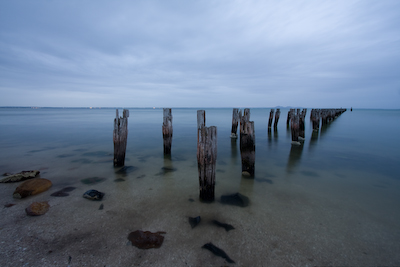 |
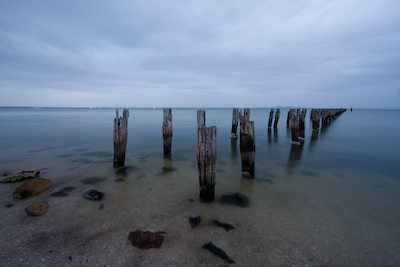 |
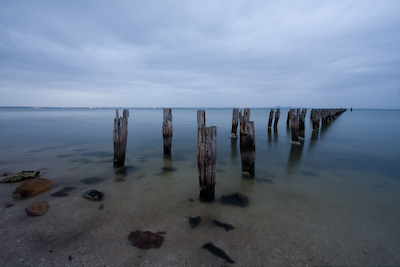 |
| Shot @ Cloudy, WB set to Cloudy | Shot @ Tungsten, WB set to Cloudy | Shot @ Fluorescent, WB set to Cloudy |
You can see that the colour temperature is identical in all 3 RAW images.
Conclusion
Benefits of Shooting in RAW
Results show that the best white balance solution is to shoot using RAW.
This allows you to set the WB after the photo has been taken, not having to worry about setting the WB on shoot.
However, some people like to shoot in JPEG, (i.e if they are restricted with space, or want to easily transfer photos or don’t have the time to post process), and some people don’t have a choice to shoot in RAW if their digital camera does not support it. In these situations, WB selection is essential for good, realistic results.
It may also be essential to get the WB right on shoot as mentioned above (e.g. fashion and advertising photography and portrait and wedding photography) where the colours and skin tones need to be accurately recorded.
So, if you can, always shoot in RAW to take advantage of the benefits and it is probably also good practice (depending on your situation) to set the WB correctly and get it right first.
Great article Jared,
My camera does not have the cpacity to shot in RAW, so I found this really useful.
Thanks Melanie, glad you found it helpful 🙂
Great info, as white balance is something that many people do not understand.
I’m not surprised that the second set of shots all turned out the same when you post-processed them using the same white balance config. That’s because when shooting RAW, the white balance setting isn’t actually causing any changes in the actual content of the RAW file, other than setting a flag to indicate the default white balance that is to be used when post-processing the image.
Thanks for commenting Martin 🙂
You’re right, the RAW images are not touched, only the information on how to interpret and display the RAW file is modified.
Yup – and that’s exactly why it’s a good idea to shoot in RAW!
Nice post Jared. It helps a lot.
Thanks again.